Water for wineries
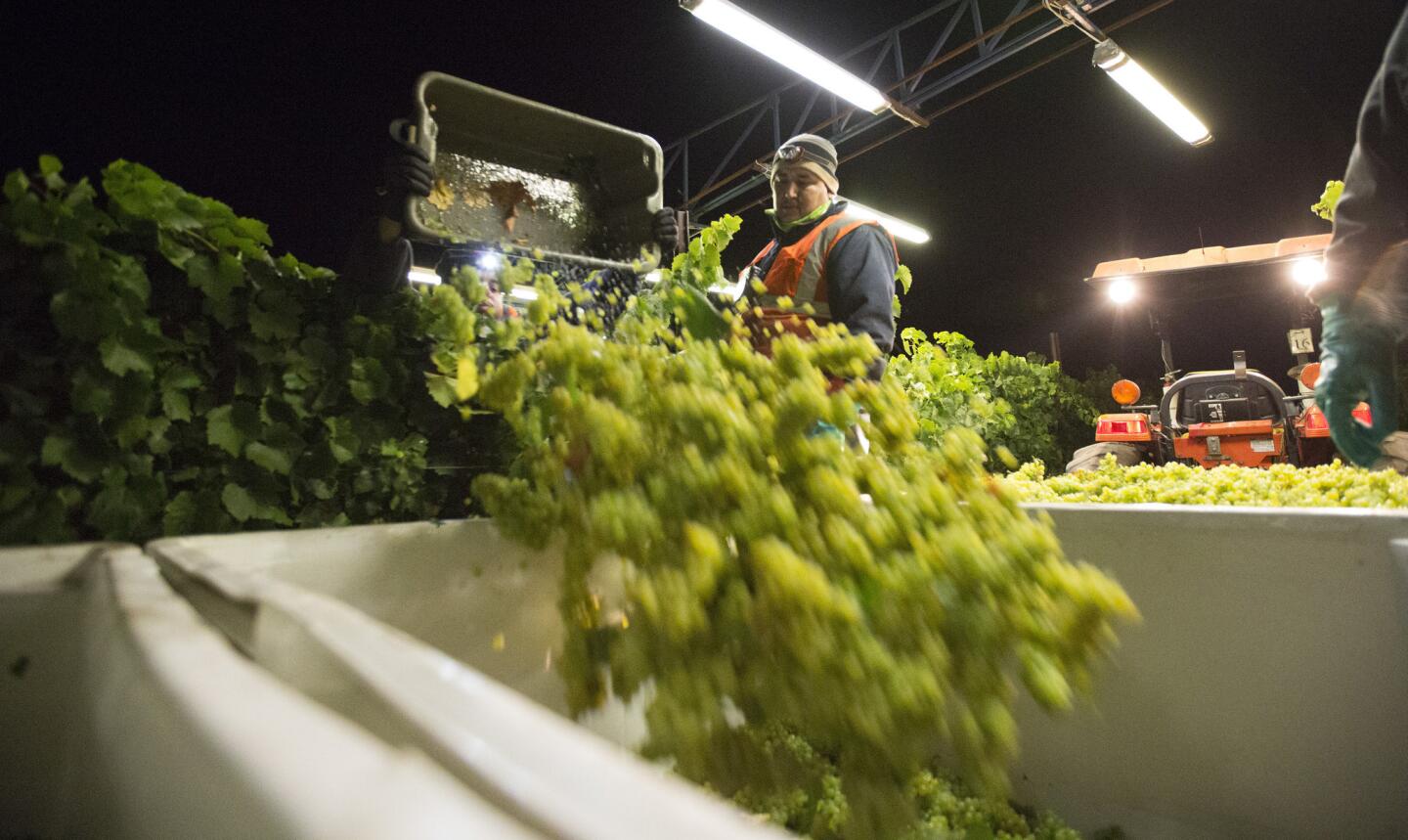
Freshly harvested grapes are thrown into bins at the Sangiacomo Family Vineyard. The industry uses precision irrigation practices that involve complex remote-sensing devices, satellites and drones.
(Brian van der Brug / Los Angeles Times)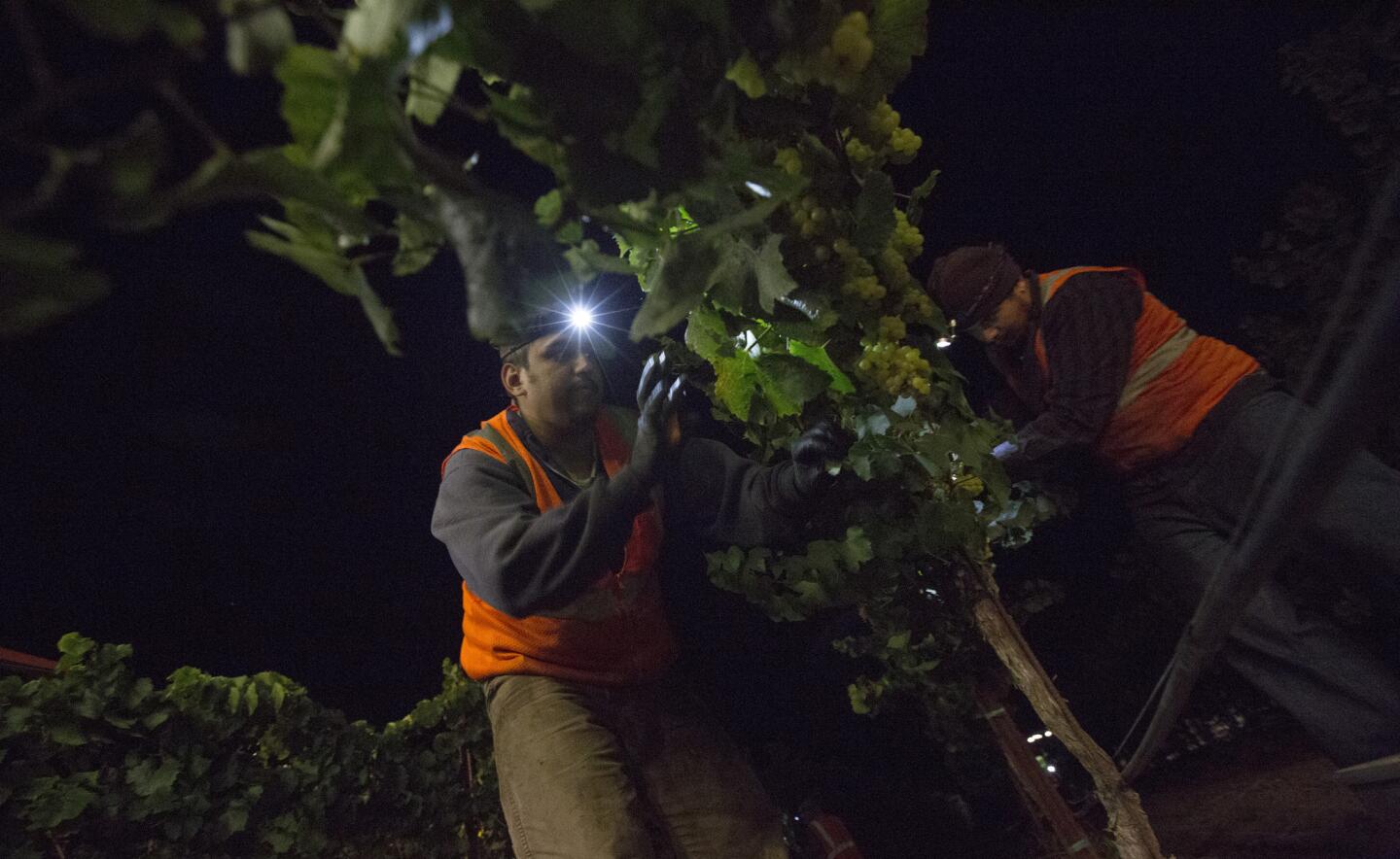
Farmworkers using headlamps pick grapes before dawn on the Sangiacomo Family Vineyard in Sonoma. Vineyards are considered agriculture operations and have not been ask to cut back water use as strictly as residents.
(Brian van der Brug / Los Angeles Times)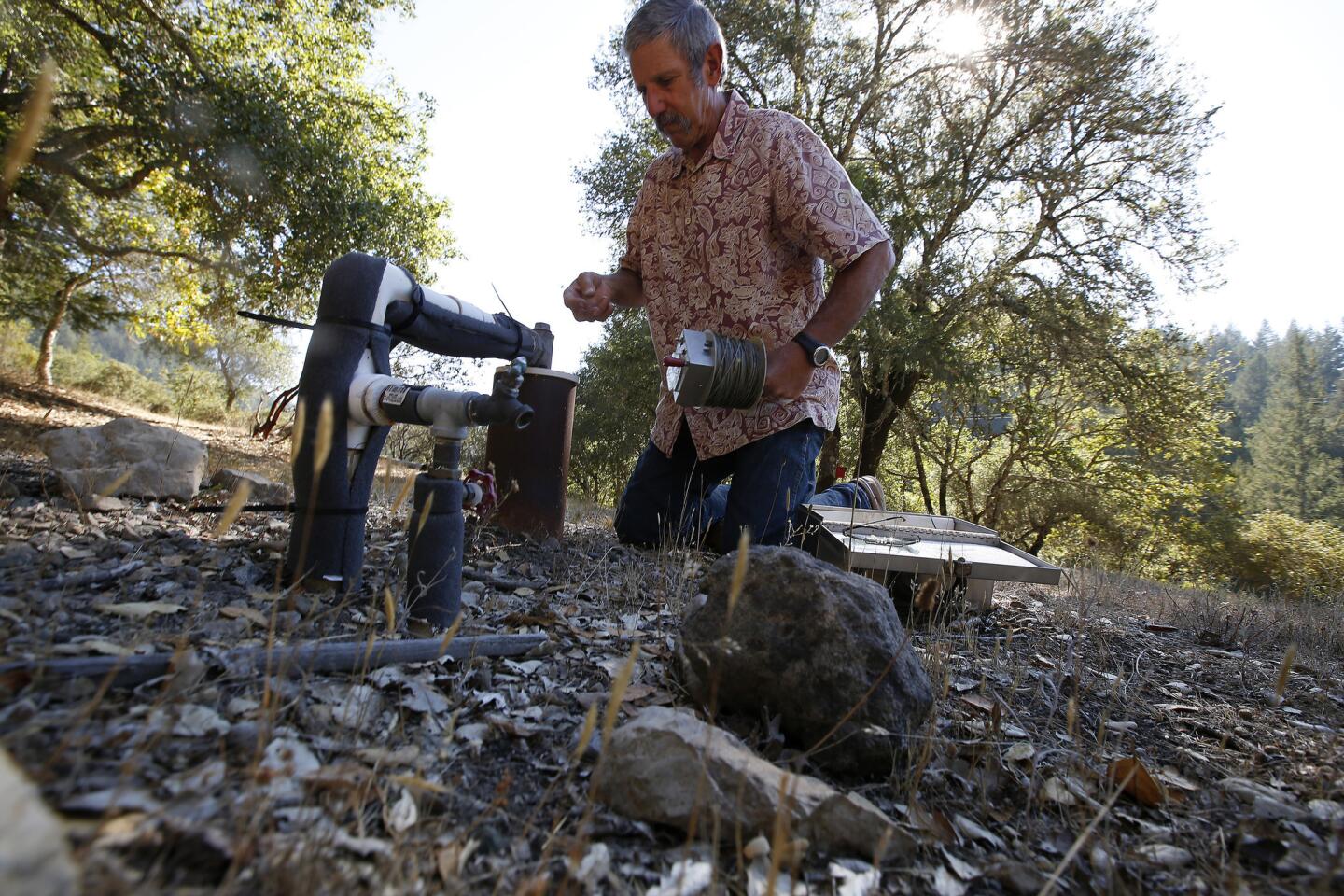
Ray Waldbaum checks the water level in the well at his home in the Mayacamas Mountains in Santa Rosa. The water level has dropped 10 feet since May.
(Brian van der Brug / Los Angeles Times)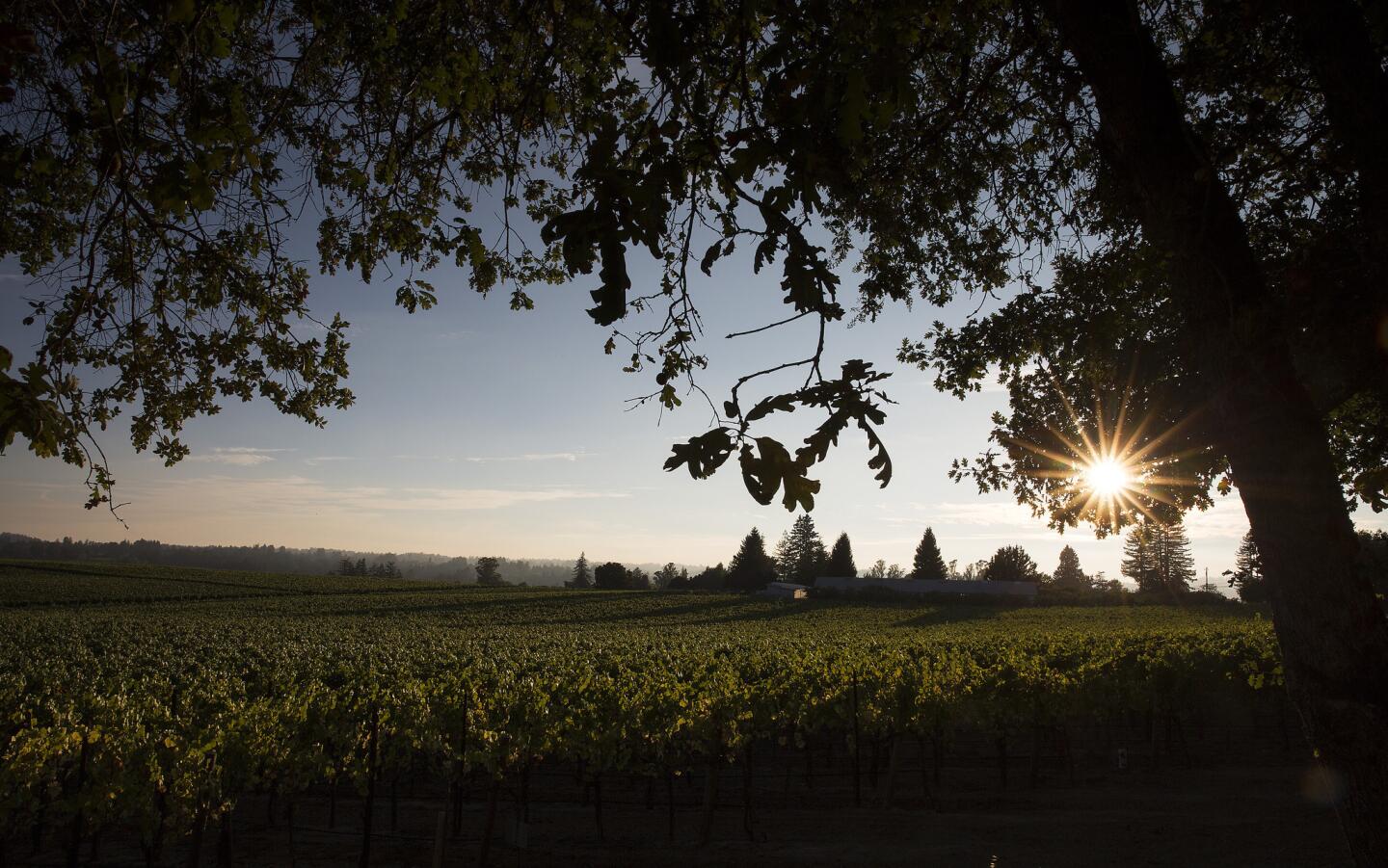
Public outcry at the shrinking of local streams within the Russian River watershed is leading to some regulation of Sonoma County vineyards’ water use.
(Brian van der Brug / Los Angeles Times)Advertisement
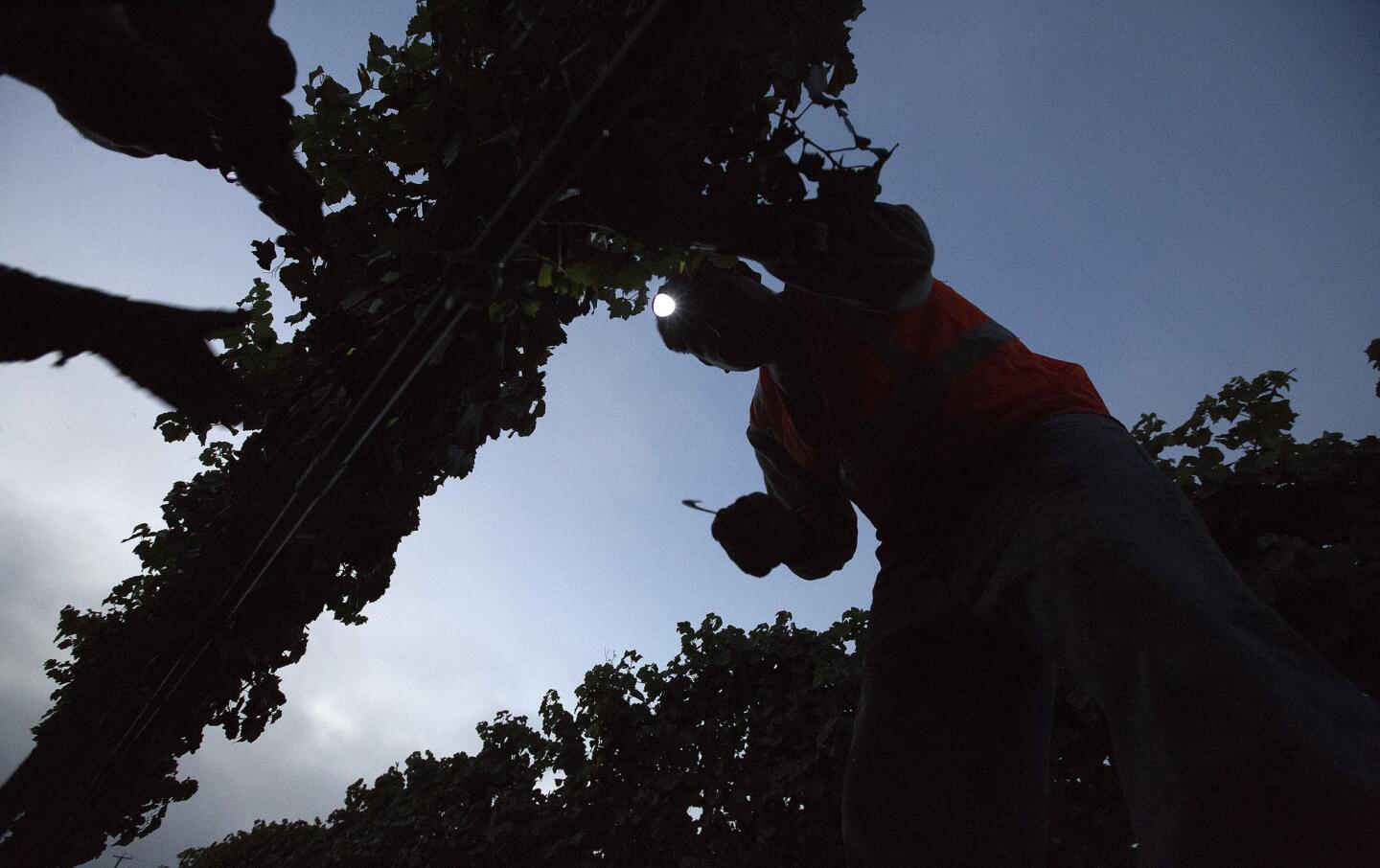
Activists say the wine industry’s sustainability program is too reliant on self-reporting, and that the Sonoma County Winegrape Commission hasn’t reported its water use data in a year.
(Brian van der Brug / Los Angeles Times)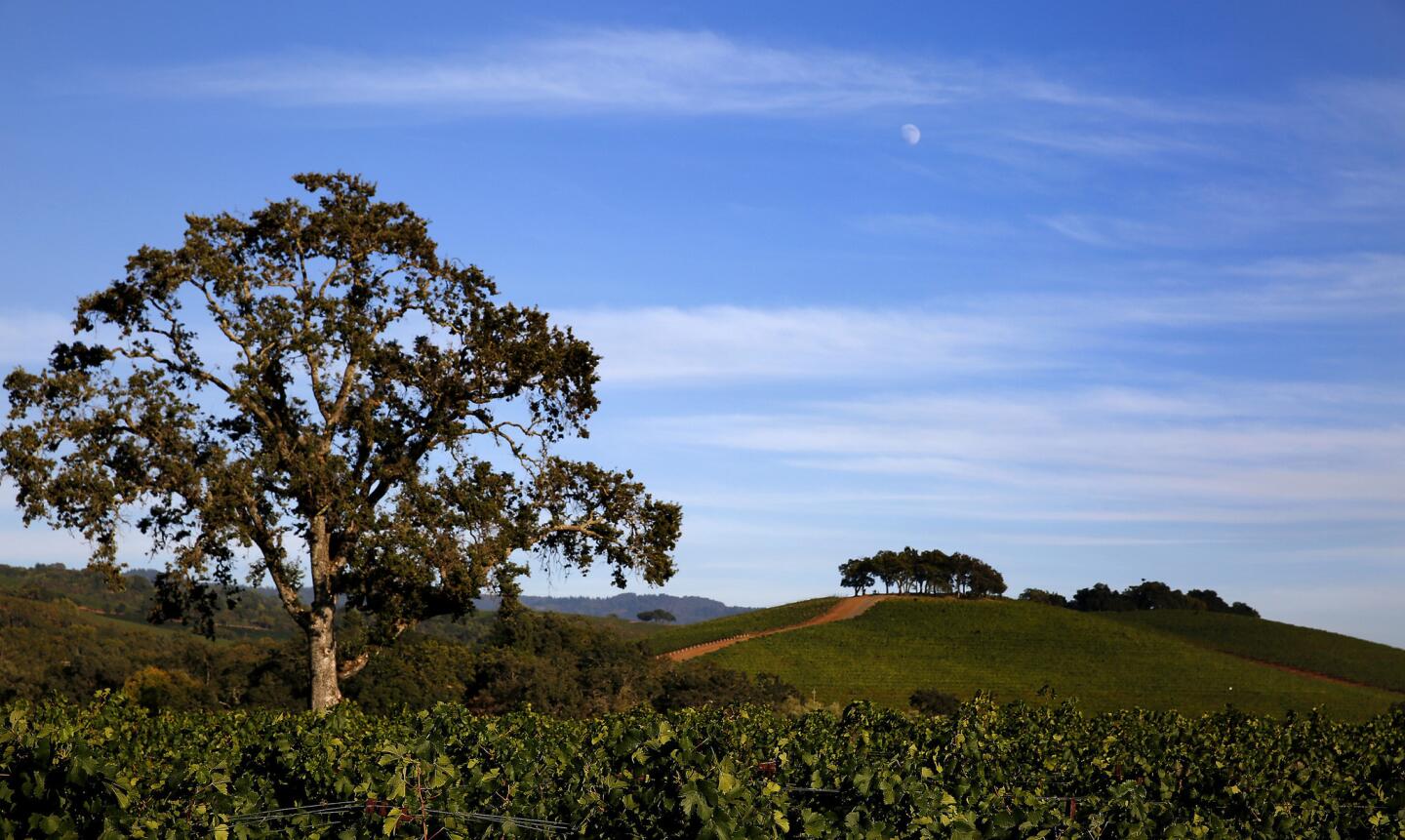
Under pressure from the public, the Sonoma County Winegrape Commission gradually persuaded about half the vineyards along four crucial salmon creeks to slash water use by 25%.
(Brian van der Brug / Los Angeles Times)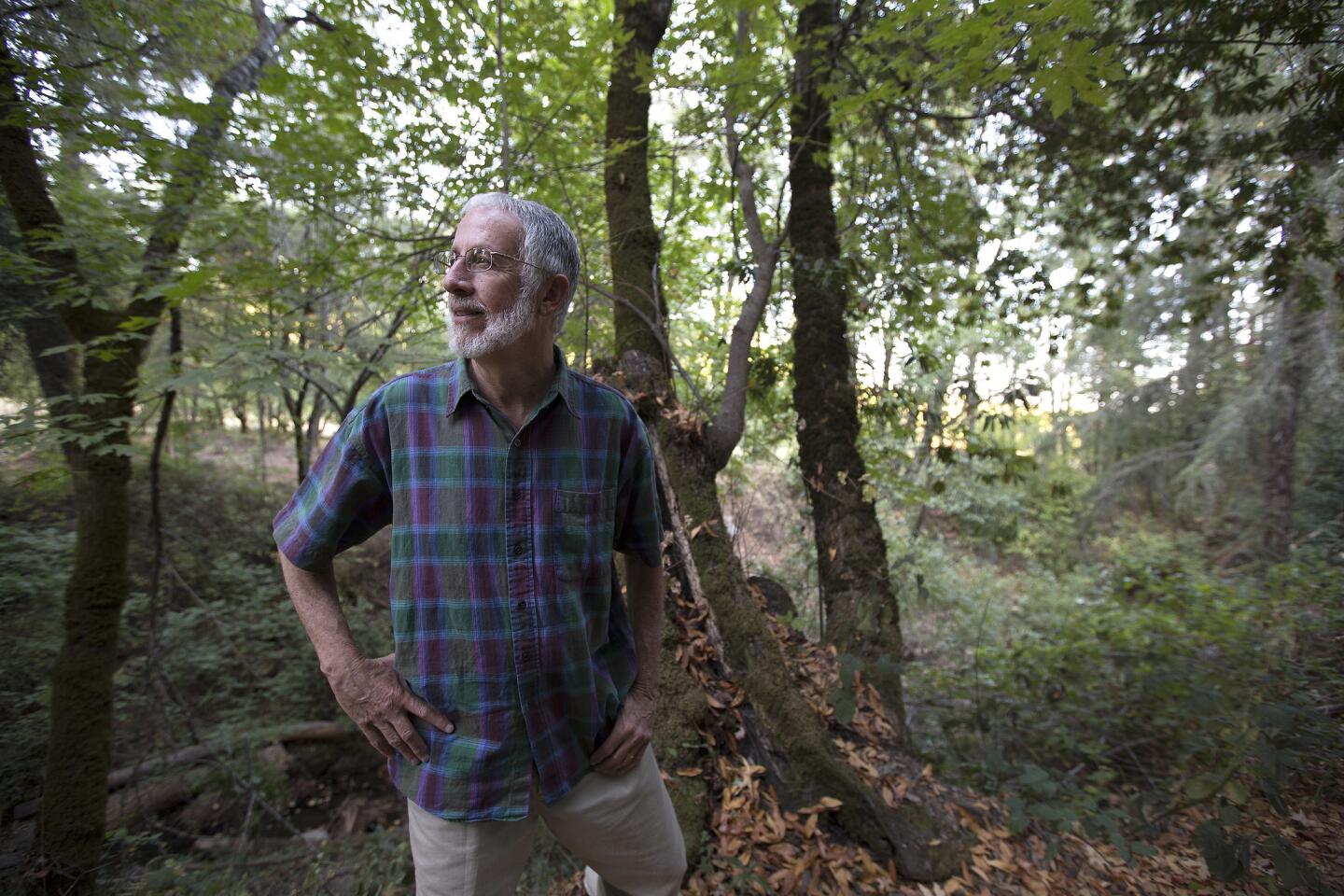
Richard Hersh stands along Green Valley Creek, where large salmon used to run, in Sebastopol.
(Brian van der Brug / Los Angeles Times)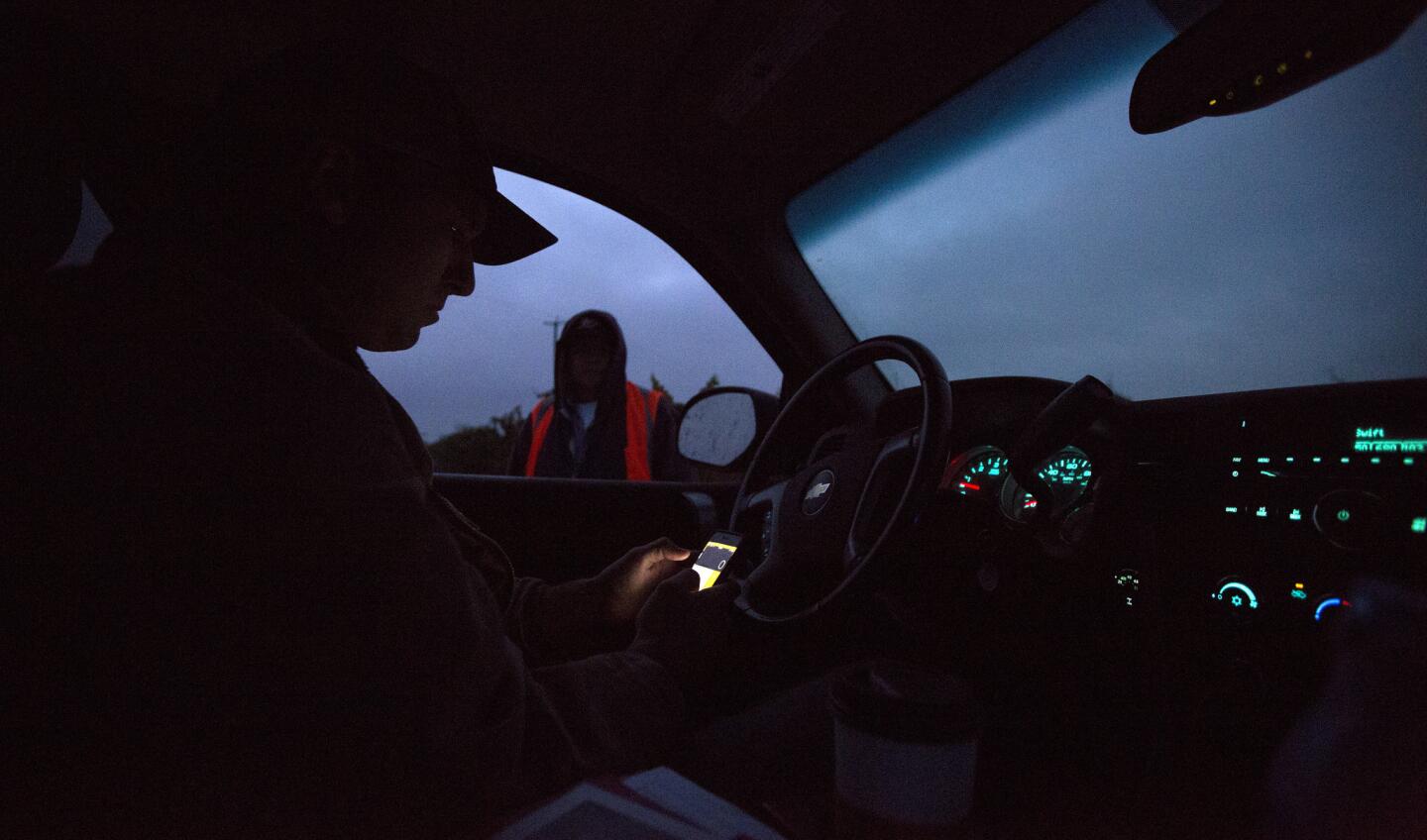
Steven Sangiacomo sends a text to workers picking grapes before dawn on the Sangiacomo Family Vineyard.
(Brian van der Brug / Los Angeles Times)Advertisement
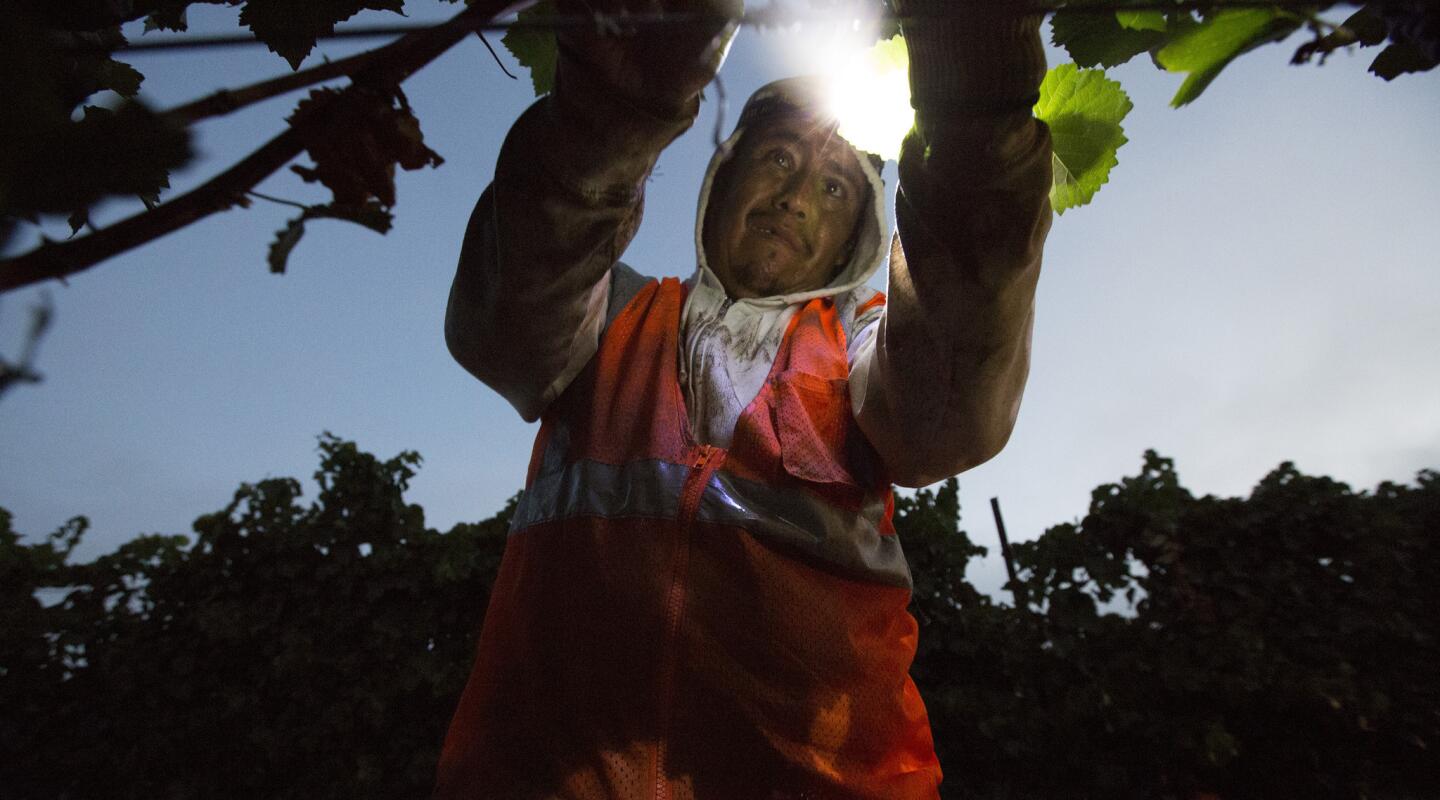
Sonoma County is in a struggle over the meaning of the agricultural lifestyle, one expert says, with a burgeoning focus on events held at wineries over the product they’re known for.
(Brian van der Brug / Los Angeles Times)


